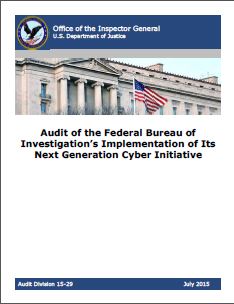The Center for Strategic and International Studies (CSIS) produced a cybersecurity agenda in December 2008 for the 44th Presidency (CSIS:44) and built on that to produce a report in January of 2017 for the 45th Presidency (CSIS:45). What follows is a high-level overview of each (a future post will compare/contrast the two reports).
Key elements/recommendations from the CSIS:44 report:
- The need to create a comprehensive national security strategy focused on cyberspace
- Authority: the need for leadership to flow outward and downward from the White House
- Enhanced cybersecurity through public/private partnerships
- Standards and regulations drafted and applied to the realm of cyber
- The underpinnings of trusted identities for authentication and authorization balanced against privacy interests
- Legislative updates that address current and future needs and based on a technology-centric approach rather than applying pre-existing, outmoded legislation to cyber issues
- Security through acquisition: mandating that purchases leverage secure computing environments (both hardware and software)
- Long-term outlook: training, research, and education to develop leadership and personnel able to face domestic and international cyber issues
- Build on what exists rather than re-inventing the wheel: take advantage of the Comprehensive National Cybersecurity Initiative (CNCI) and expand upon it
Key elements/recommendations from the CSIS:45 report. The focus here is on three overarching areas:
- Policy-based Recommendations
- Revise the international cybersecurity strategy – the world has become much more cyber-centric since 2009 and an international strategy must be developed to meet the current and future realities
- A two-pronged approach may be needed:
- One strategy for dealing with nations with similar goals;
- An independent strategy to enter agreements with authoritarian regimes
- Expand deterrent capabilities: cyber, kinetic, and economic countermeasures
- Enhanced international cooperation to prosecute cyber crime
- Data Protection, Privacy and Cybersecurity:
- Liaise with the private sector to develop a set of best practices which address commercial data collection and data privacy expectations including issues where physical and digital information is co-mingled
- Task the National Institutes of Standards and Technology (NIST) in conjunction with the private sector to update the definition of personally identifiable information (PII)
- NIST shall develop a set of recommended data security practices and standards (a baseline approach); and delineate generally accepted standards of care to be applied to data
- Develop a national data breach law
- Request that Congress amend the FTC to create a division of data protection
- Increased transparency for Cyber Incidents: need to encourage the use and dissemination of information related to cyber attacks and to allow entities to do this anonymously and in the absence of liability.
- The Internet of Things (IoT): recommend classifying IoT devices similar to the National Highway Traffic Safety Administration’s (NHTSA) crash tests – a rating based on their security ratings
- Encryption Policy: encourage the adoption of strong encryption while creating conditions and processes for lawfully gaining access to encrypted material from the private sector
- Active Defense: help the private sector extend their security posture outside traditional perimeter defenses; requires active coordination with law enforcement both domestically and internationally
- NIST Framework: just as critical infrastructure has done; other industries should also look to the NIST framework for general guidance on methods and processes to improve overall security.
- Raise the Costs of Attacks
- Ensure that stolen credentials are more difficult to trade and thus their value will be decreased
- Move to a multi-factor authentication model across the board
- Develop effective counter-measures against botnet attacks, specifically with the rise in IoT devices
- Military role: acknowledge the separation of duties between the military and civilian components and yet develop and enhance partnerships so that Cyber Command and Strategic Command are able to operate cohesively should a cyber situation arise
- Leverage the National Guard and Reserves in the context of state (Title 32) or Federal (Title 10 and 50) deployments in response to cyber events.
- Organization
- Create a Cybersecurity Coordinator, appoint someone and ensure they have the requisite authority as an assistant to the president.
- Continue to build-out DHS:
- Provide DHS with an actual cyber mission to become point on cyber
- Carve out a separate, independent organizational component within DHS whose sole focus is cybersecurity
- Elevate cyber positions/roles within other agencies as well to establish clear point persons and lines of communication within and amongst the government
- Government Accountability Office (GAO) should have review capability to assess cybersecurity and to perform cyber assessments
- Increase efficiency of Congressional oversight: reduce number of DHS committees to centralize congressional jurisdiction over cyber and homeland security
- Resources
- Zero Vulnerability Programs: these are critical underpinnings to enhance software and to discover issues; thus ensuring that zero-day research is lawful will ensure that researchers can continue this vital work.
- Increased reliance on Cloud services and Outsourcing: for smaller agencies/departments there may be benefits to outsourcing IT and gaining increased security. Contracting with providers may reduce exposure and allow providers to specialize in IT and cybersecurity rather than forcing federal agencies to develop this expertise in-house.
- Cybersecurity Workforce: given the current shortage of properly trained cybersecurity professionals a model must be developed to create a pipeline of persons through education and training that can be utilized in the cybersecurity context. It will be important to develop models that include cyber education as early as elementary schools.






Leave a Reply